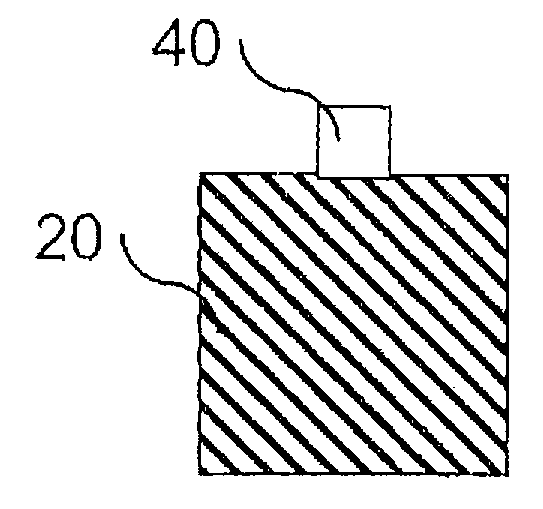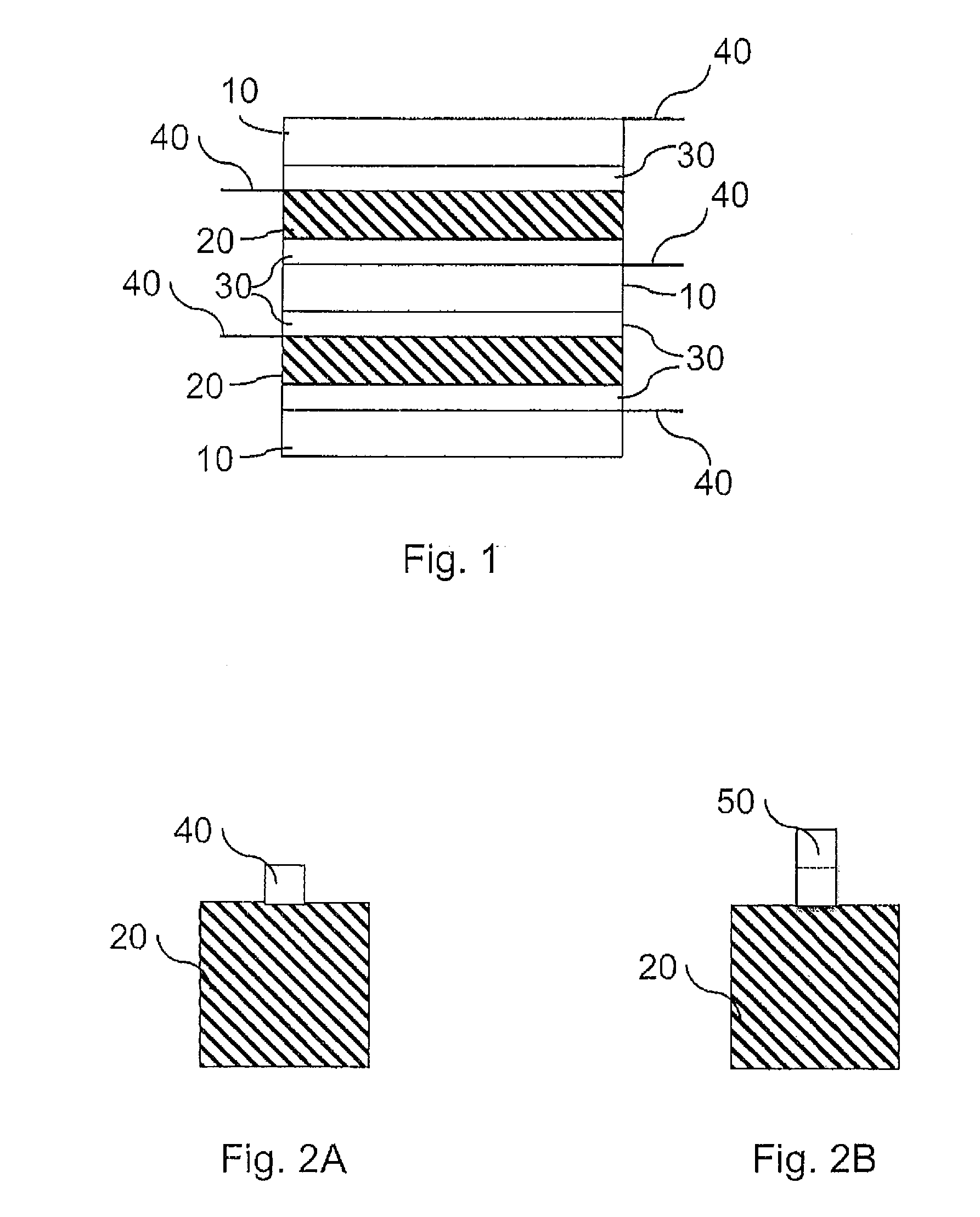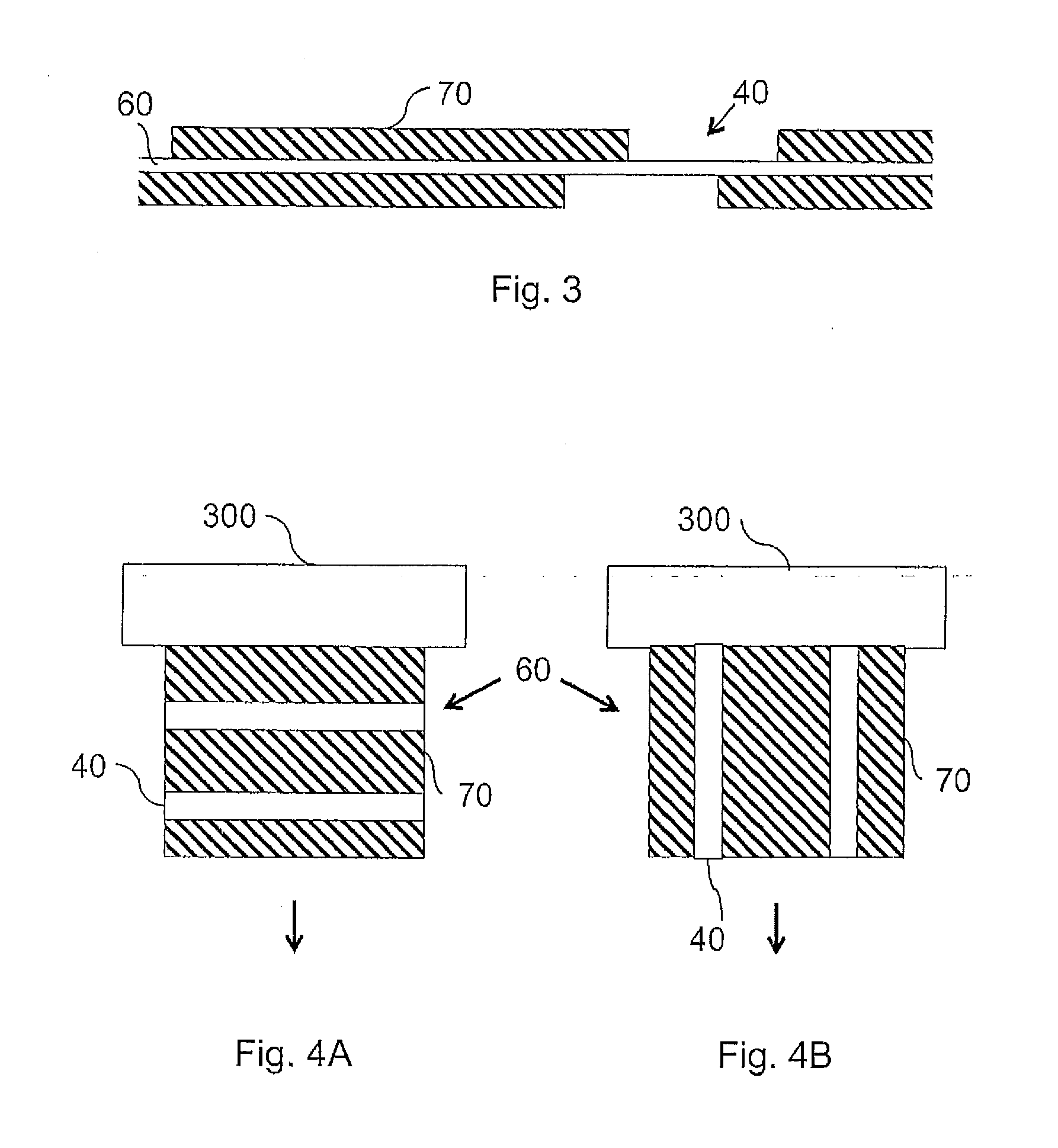Battery electrode and a method for producing same
a battery electrode and electrode material technology, applied in the field of battery electrodes, can solve the problems of high cost, complex and expensive production of uncoated arrester regions using these methods, and the shape and arrangement of arrester regions on the electrode material are greatly restricted, so as to achieve high edge quality, reduce energy input, and maintain low thermal loading of the electrode material
- Summary
- Abstract
- Description
- Claims
- Application Information
AI Technical Summary
Benefits of technology
Problems solved by technology
Method used
Image
Examples
Embodiment Construction
[0035]The invention will be described below using the example of the lithium-ion battery which is distinguished by a high energy density and thermal stability. However, the present invention is not intended to be restricted to lithium-ion batteries but can be applied to any desired battery.
[0036]In a lithium-ion battery, a collector substrate 60 of an anode 10 is composed, for example, of copper which is coated with a coating film 70 which is composed of graphite, binder, carbon black and solvent. According to the present invention, the coating film 70 in an arrester region 40 is removed, with the result that the collector substrate 60 in the arrester region 40 is exposed. A connection lug 50, for example which is composed of nickel, can be mounted on the arrester region 40 of the anode 10. In the case of the cathode 20, a collector substrate 60 is composed, for example, of aluminum and is coated with a coating film 70 comprising an active material which contributes to a redox react...
PUM
| Property | Measurement | Unit |
|---|---|---|
| thickness | aaaaa | aaaaa |
| wavelength | aaaaa | aaaaa |
| thick | aaaaa | aaaaa |
Abstract
Description
Claims
Application Information
 Login to View More
Login to View More - R&D
- Intellectual Property
- Life Sciences
- Materials
- Tech Scout
- Unparalleled Data Quality
- Higher Quality Content
- 60% Fewer Hallucinations
Browse by: Latest US Patents, China's latest patents, Technical Efficacy Thesaurus, Application Domain, Technology Topic, Popular Technical Reports.
© 2025 PatSnap. All rights reserved.Legal|Privacy policy|Modern Slavery Act Transparency Statement|Sitemap|About US| Contact US: help@patsnap.com



